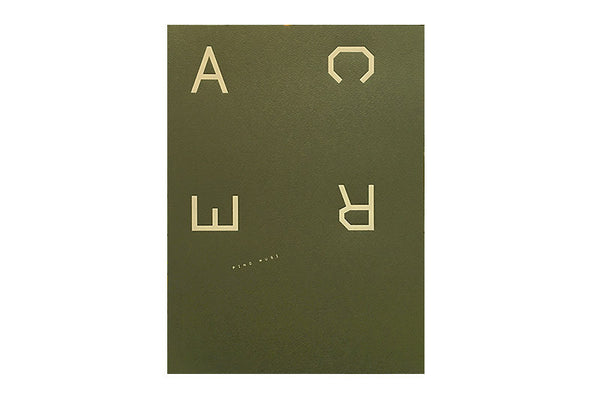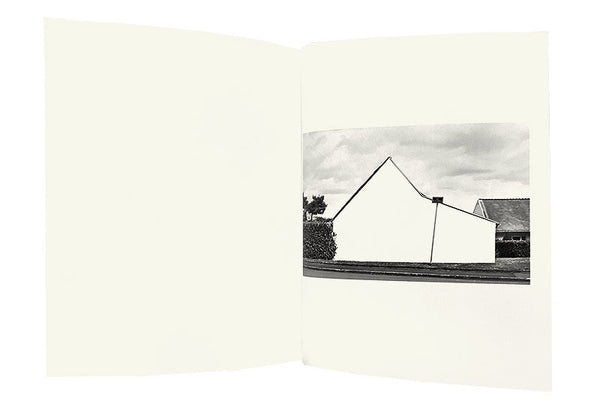



Pino Musi
ACRE
Editions GwinZegal, Guingamp (FR) — 2017
In April 2016, when Pino Musi embarked upon a photographic series in Côtes-d’Armor, that geographical area was a terra incognita for him. At the invitation of the GwinZegal Art Centre in Guingamp, which was involved in the promotion of photography in that predominantly rural area, the Paris-based Italian photographer would, for the first time in his career, find a chance to conduct a long-term project spanning several months.[…]
By putting architecture at the centre of his praxis, Pino Musi’s interest was initially focused on the structure of the farm buildings and farmsteads which punctuate a countryside geared essentially towards livestock farming and dairy production. This attention to the seemingly qualityless spaces of a precarious rural society, living in the farflung hinterland, far from large urban centres, distinguishes this project from earlier ones, whose priority was the more tourist-oriented coastal areas of the region--one example being Suzanne Lafont’s work as part of the Photographic Mission of the DATAR another, Thibaut Cuisset, who was commissioned between 1994 and 1998 in the Côtes d’Armor by the Observatoire photographique du paysage. […]
This journey started with makeshift roadside shelters, followed by sheds and farms, and then moving to impressive buildings of agri-business companies, and lingering in small towns becoming depopulated, before ending up in the suburban zones associated with the phenomenon of rurbanization.
The photographer here describes, with both precision but without emphasis, a fragile and paradoxical countryside, whose ancestral and unchanging character contrasts with ever faster changes taking place. His images with their grey hues, stripped of contrast, and without any human presence at all, convey the monotony and suspended atmosphere of these places, heightened by the absence of any time-related clues, with the exception of a few rare automobiles. Recorded with the help of a digital camera, with no systematic use of a tripod in order to increase the spontaneity, the resulting photographs still manage to display the qualities of field camera work, the usual tool in the landscape artist’s kit: assertive geometrization, balanced composition and stylistic neutrality combined with a very high descriptive quality.
The matter of the viewpoint also turns out to be decisive, because the cameraman has to choose the right distance to clearly define the spatial relations between the different elements. For it is indeed an interplay of formal order that Pino Musi is involved with, he who was brought up on the minimalist aesthetic, and is someone evidently keen to find in reality the equivalent of the plastic forms of geometric abstraction. A certain number of his images emphasize the entanglement of successive constructions, while others single out, to the point of creating something monumental, frontal views which block the landscape’s horizon. […]
While his neutral and balanced recording of blind façades inevitably conjures up memories of a figure like Walker Evans, it is the ancestry of Lewis Baltz’s oeuvre which seems to forge his approach even more. Looking at this corpus of images, one can gauge the extent to which photography and architecture are connected by a staunch spirit of cahoots. In fact the two disciplines share in common an acute awareness of space, light and matter. Above all, both submit an arrangement of forms, volumes, reliefs, solids, and voids. […]
In a subtle balance between objectivity and sensibility, Pino Musi’s art is hallmarked by a documentary vision heightened by experiments with form. Prompted by this desire to render the landscape objective, yet not without thoughts about the socio-cultural and environmental context of the site in question, he manages to re-define these places as landscapes, and restore a dignity to the humble reality of this rural world.
Excerpt from Campagne photographique, Alexandre Quoi,
Acre, éditions GwinZegal, 2017.